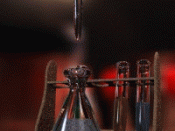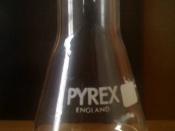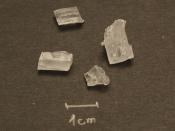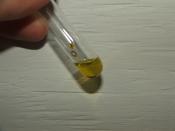Hypothesis:
In the investigation of the rate of reaction and concentration of Sodium Thiosulphate. I predict that the higher the concentration of sodium thiosulphate solution, the faster the rate of reaction because if the solution is made more concentrated it means there are particles of reactant knocking about between the water molecules. This makes collisions between the important particles, more likely. I also predict the sulphur precipitate will turn the solution a cloudy yellow and will vague the cross x.
Apparatus:
- Goggles
- Stop clock
- 250cm3 conical flask
- 10cm3 measuring cylinder
- 50cm3 measuring cylinder
- 0.1m sodium thiosulphate solution
- 2m hydrochloric acid
- Teat pipette
Practical:
- Gather the apparatus and set it up.
- Measure out 10cm3 of Na2S2O3 and 40cm3 of water in a measuring cylinder.
- Pour solution into a conical flask.
- Measure out 10cm3 of HCL3 into a 10cm3 measuring cylinder
- Pour the HCL2 into the conical flask with dilute Na2S2O3 immediately the HCL2 is poured start the stop clock.
- Swirl the flask
- As the solution becomes cloudy the laminated black cross will slowly but surely disappear.
- When the black cross disappears stop the stop clock.
- Record the results.
- Repeat the experiment changing the amount of H2O and Na2S2O3.
- Do not change the amount of HCL2.
ie,
20cm3 Na2S2O3 30cm3 HCL2
To
50cm3 Na2S2O3 0cm3 HCL2
Fair test:
In order for my investigation to be a fair test I will have to carry out the following corrections:
1. To use the same amount of HCL2
2. Make sure the solution is the same volume
3. Start the clock immediately when all the solutions have been handed in.
4. Then stop the clock immediately when the x disappears.





